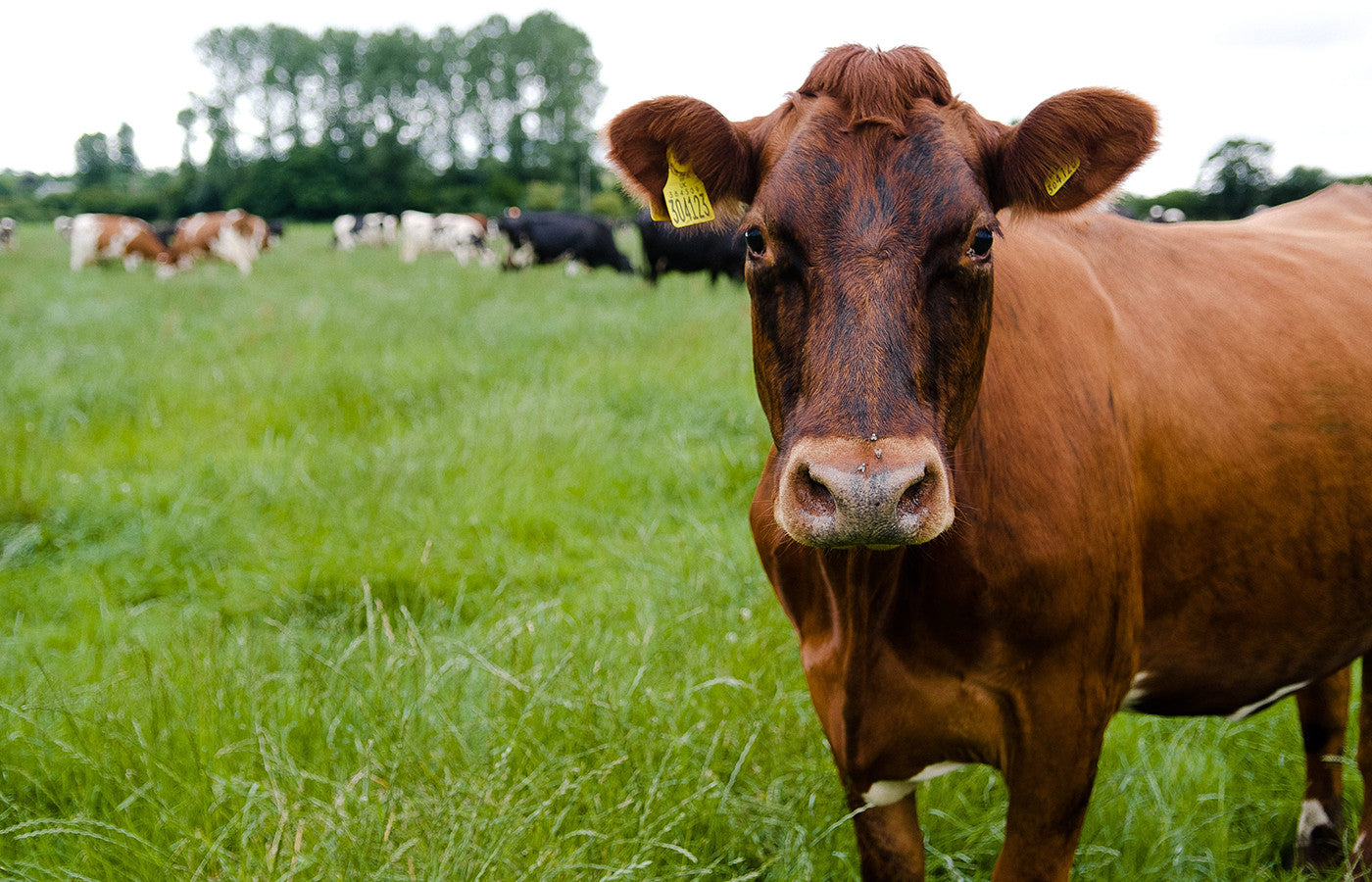
Grass

Grass is cows' favourite food. It's lucky, then, that grass grows so well in the lush fields of Devon. The easiest way to harvest the grass is to have cows eat it for themselves. That way they get all the goodness in every bite, all those lovely volatiles you can smell when you cut the lawn. Those volatiles then come through in the milk, then the cheese, giving the glorious aroma you can describe as 'cow's breath': warm, animally, a green aroma.
There's an art to getting cows to graze, especially if you want them to sustain themselves on the grass for most of the year, as we do. We use a Kiwi-Grazing system.
We measure each paddock with a rising plate meter every week. It's a circular plate on a metal pole attached to a spring. You put the pole on the ground, and the plate rises to the level of the grass beneath it. You do this perhaps a hundred times and the meter counts high how the plate rises every time. Then you know how much grass is in the paddock, and how much it's grown since last time you measured. Do that every week and you can work out how much grass you've got across the farm, if the grass is growing fast enough to feed the cows or if you need to top up their feed with silage.
The main grass variety we use is perennial ryegrass. It's got a little red blush at the bottom of its stem; it grows early in the season and keeps growing late. It's best in combination with white clover, which grows well in the summer. Put the two together and you get self-sustaining growth. Over the years we have added more deep rooted plants, salad burnet, chicory, sainfoin and others, to bring minerals up from deep in the soil, to help soil structure, and to keep growing in a drought.
By grass-grazing we take an awful lot of that carbon dioxide out of the air and put it back in the ground as organic matter, where it will make the soil richer and more productive. Cows do burp methane, but when they eat grass, they burp less.
Grass has a lot good things going for it: feed cows on grass, and their milk contains more conjugated linoleic acid, CLA, (good for everything) and the beneficial ratio of Omega 3 oils and Omega 6. That rich yellow colour in the milk comes from carotene (vitamin A) in grazed grass, too. We know our milk is a true expression of our terroir, making it the most incredible ingredient for our clothbound cheddar.

